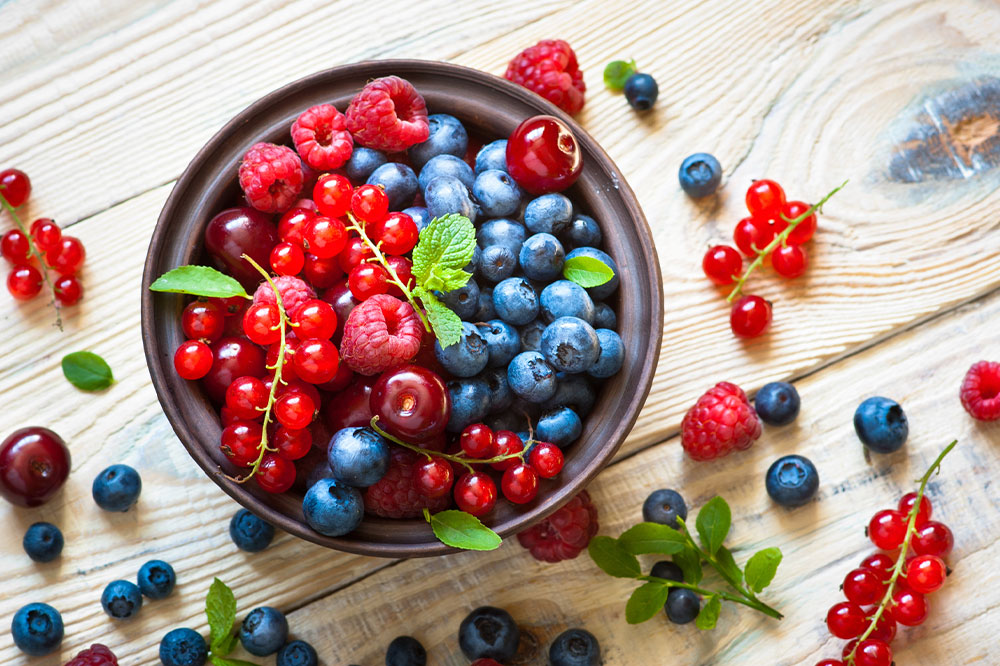8 snacks that help manage cholesterol levels

People on a time crunch may not be able to cook a healthy meal instantly, and therefore, resort to eating fast foods like pizzas and burgers. They may even eat these foods because of their rich flavor. But this may lead to high cholesterol – a waxy substance that could cause chest pain, heart attacks, and strokes. So, to enjoy a quick bite and maintain cholesterol levels, consider these easy snack ideas.
Tuna wraps
Those who include tuna in their daily meal regime may benefit from its omega-3 fatty acid content, a type of unsaturated fat with cholesterol-lowering effects. One could make a quick tuna salad with canned tuna and a couple of other ingredients, such as onions, carrots, mayonnaise, and celery. Once this combination is ready, use nori sheets (thin, edible seaweed) or lettuce leaves to roll the mixture into wraps. The snack will also help nourish the body with a range of other nutrients such as proteins, calories, fibers, and carbohydrates.
Whole grain toast topped with avocado
Both whole grain and avocado are generally healthy foods. The fruit is rich in monounsaturated fats, which are known to lower low-density lipoprotein (LDL) or unhealthy cholesterol. Avocados are also rich in fiber, so eating the fruit could introduce about 14 grams of the current Daily Value to the body. Moreover, this may promote the growth of healthy bacteria, which can complement gut health. To make this easy snack, top wholegrain toast with a quarter of an avocado that is thinly sliced, along with a tablespoon of hummus, which may also increase the fiber content received by the body. Finally, squeeze a little lemon juice and sprinkle fresh herbs to enhance flavor.
Oatmeal bites
Oatmeal is a beneficial option that one could enjoy as a snack at any time of the day. The food is rich in soluble fiber beta-glucan, which is known for its cholesterol-lowering effects. The fiber content of oatmeal also helps in the management of bile – an acid that aids in excretion. Moreover, oatmeal intake may contribute to the movement of cholesterol through the digestive system and help the body avoid its absorption. To make oatmeal bites, one could use options such as rolled oats, ground flax seeds, chia seeds, dark chocolate, and dried fruits. Mix a ratio of one cup of oats to half a cup of nut butter and two tablespoons of honey, and add a cup of optional mix-ins like nuts, seeds, or dried fruit. Finally, scoop one tablespoon portions of the mixture, roll them into a desired shape, and refrigerate them. Oatmeal bites are a great option for a quick snack and help one avoid unhealthy eating habits.
Roasted garbanzo beans
Also known as chickpeas, garbanzo beans are rich in plant proteins and fibers. Therefore, adding them to one’s meal plans could introduce healthy properties that help bring down cholesterol levels. All one needs to do is cook a cup of chickpeas and toss them in olive oil. One must also sprinkle a little salt and spread them evenly on a parchment paper-lined sheet pan. The last step is to roast them at 400°F for about 30 minutes or until the beans turn crispy. One could also season them with dried spices such as paprika, lemon zest, or black pepper for added flavor and enjoy them throughout the day.
Popcorn
Most people might be glad to learn that popcorn serves purposes other than just being a snack at cinemas. It is a high-fiber food that can be beneficial for heart health. Furthermore, popcorn does not contain high cholesterol, but one must avoid preparing the snack with added sugars and salt. They must also steer clear of coating the food with other ingredients like butter and caramel. Those who want to introduce a little flavor to popcorn should add a dash of extra virgin olive oil to the mix.
Cooked edamame
Another heart-healthy snack option that one could include in their daily meal regime is edamame. It is a food source of soy protein and research suggests that people who ate an average of 25 grams of soy protein a day showed a reduction in LDL cholesterol by about 3-4%. Edamame also contains other properties, such as fibers, vitamin K, and antioxidants, which are beneficial to improve heart health and tackle unhealthy cholesterol levels. Turning edamame into snacking is easy; one needs to steam the legume when it is frozen until it is cooked thoroughly. Then, one must sprinkle a pinch of coarse salt on the vegetable before munching on the healthy concoction.
Low-fat yogurt with berries
Swapping full-fat dairy with a low-fat alternative is essential for those who want to keep their cholesterol levels in check. Low-fat yogurt could help nourish the body with substantial calcium without excessive saturated fats. The food is also rich in proteins, which may help an individual feel full for a longer period. One could mix berries with yogurt to make the snack tasty and healthy. Berries are rich in soluble fibers, which are said to help in managing unhealthy cholesterol levels. Alternatively, one could also add other foods like chia seeds or flax seeds and granola to the yogurt.
Apple slices
Certain fruits like apples are a popular snack to lower cholesterol levels. Apples are rich in fiber and calories that could help fight the unhealthy wax-like substance in the blood. The fiber and healthy fat in the fruit may also help one feel full for longer, which is essential to manage unhealthy eating habits at any time of the day. While one could eat apples as they come, cutting them into slices is a great way to enjoy the fruit in another shape. One could also try other variations, such as drinking apple juice or blending it with other heart-healthy ingredients to create a smoothie.


